Notes
Shutter Shock: The Photos that Expose Trump’s Mind in Disarray
The media, barring some exceptions, sanitizes Trump’s incoherence. Quotes help, but nothing exposes his confusion and chaos like visible reactions.
By Michael Shaw and Cara Finnegan
Joe Biden’s withdrawal from the presidential race in July led to a shift in the media landscape which included greater focus and open discussion of Trump’s cognitive health. In late August and early September, with heightened expectations for his September 10th debate with Kamala Harris, the media focus on Trump’s incoherence intensified.
Several public appearances, including a speech to a conservative group where Trump made unfounded claims about gender-affirming surgeries in schools, and an event at the New York Economic Club where he gave a left field response to a question about childcare affordability, primed this scrutiny.
In that same period, writers like Parker Molloy, Aaron Rupar, Margaret Sullivan, and others called out the media for summarizing and lending logic and context to Trump’s cryptic speeches and interviews. Rupar applied the term “sanewashing”— a term coined several years earlier in a different context—to illustrate how the media has been cleaning up Trump’s non-sense.
In our under-four-minute Chatting the Pictures video, we look deeply at a photo circulated by the New York Economic Club, taken during Trump’s speech on September 5th. In the video, we study the club member’s visual engagement with Trump on the podium, especially involving board member Reshma Saujani. We also look at photos from the next day of Trump’s press conference at Trump Tower and a speech to the Fraternal Order of Police in Charlotte.
A More Visceral Approach than Just Transcripts and Funny Faces

From: “A New Level of Incoherence From Trump. His answer to a specific policy question yesterday made absolutely no sense.” The Atlantic. September 6, 2024. Photo: David Dee Delgado / AFP / Getty.
Observers and critics mainly call out Trump’s incoherence through video clips or extended quotes.
The primary way it is depicted photographically—especially in articles about his cognitive functioning—is through images that show him making awkward faces or instances where his mouth is obscured.
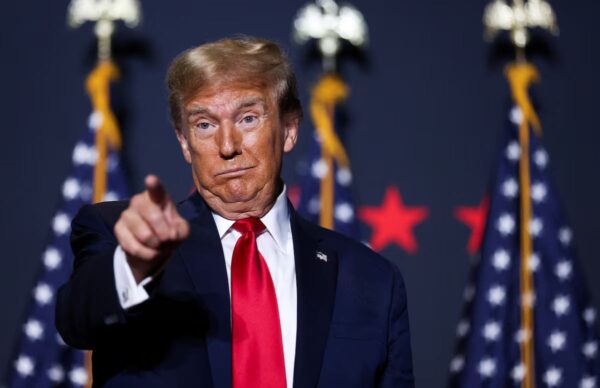
Former President Donald Trump gestures at a campaign event ahead of the Republican presidential primary in North Charleston, South Carolina, February 14, 2024. Photo: Sam Wolfe/Reuters
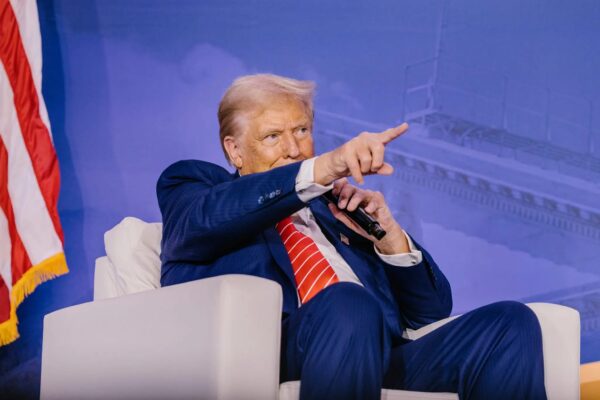
From “Meandering? Off-Script? Trump Insists His ‘Weave’ Is Oratorical Genius.” The New York Times. September 6, 2024. Photo: Jason Andrew for The New York Times
Unfortunately, those images are merely inferential. Focused on Trump alone, they do remind us of his word salad. Yet, they say nothing about the effect of his vague babble or how his blasphemy is received.
The Power of Capturing Audience Reactions
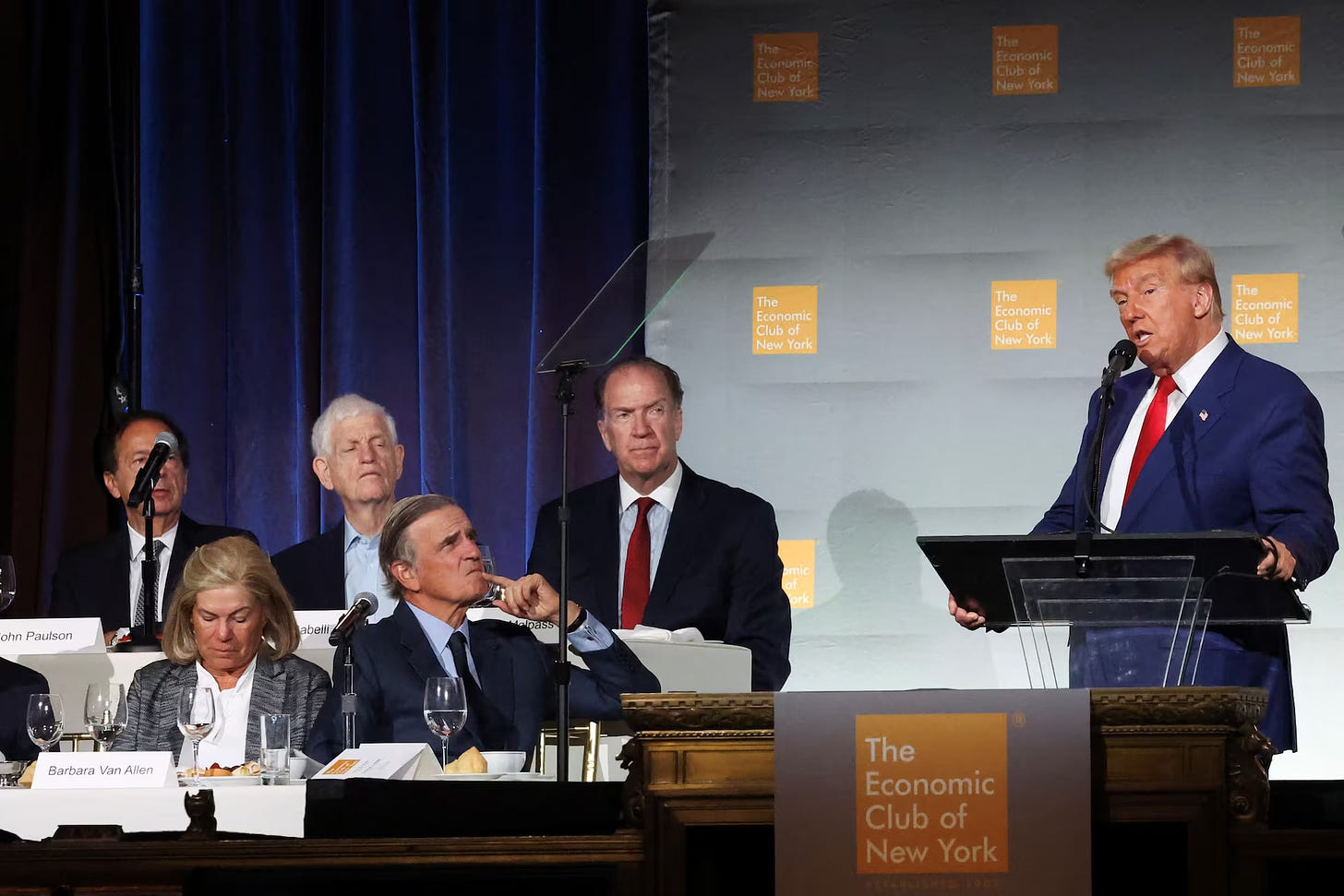
Donald Trump addresses the Economic Club of New York in New York City on September 5, 2024. Photo: Brendan McDermid/Reuters
As I state in the video, the facial reactions of the Economic Club members are highly unusual. We tend to look away from odd behavior—until it becomes too blatant to ignore. The way it breaks through in these images reveals how strongly Trump elicits these cringes and grimaces and how overwhelmingly disturbing and alienating he is.
A more impactful approach to representing Trump’s incoherence involves capturing the reactions of those around him. Images that showcase people responding with confusion, bewilderment, concern, or contempt provide indisputable feedback about the quality of his communication.
These candid moments of personal response starkly contrast with default images of Trump appearing presidential as well as mentally sound. By focusing on the reactions of others, media outlets can provide a more authentic representation of Trump’s speech and cognitive abilities.
Facial Expressions and Body Language
Observers typically display a range of facial expressions and body language in response to rambling statements and bizarre claims. Confusion and bewilderment are common, characterized by squinted eyes or furrowed brows as people struggle to process the person’s train of thought.
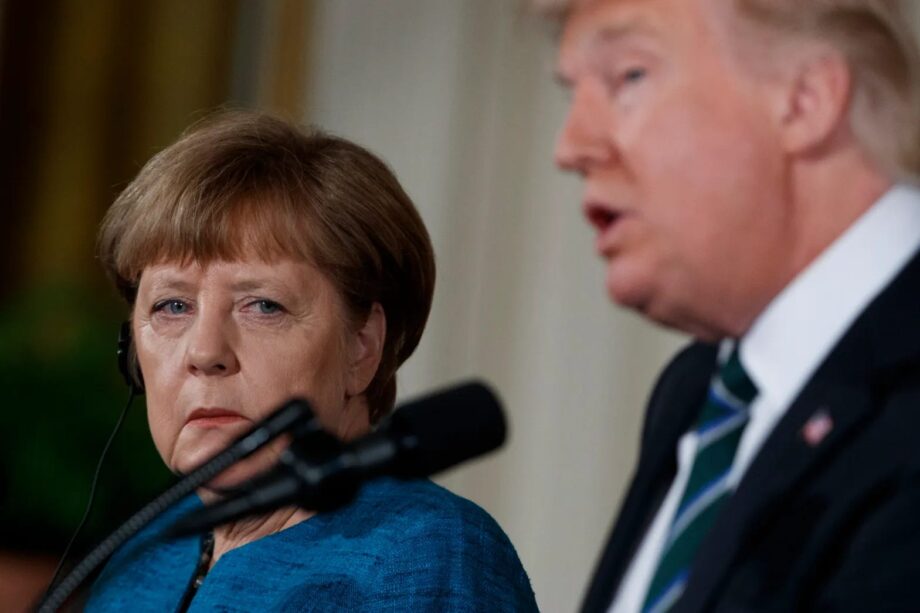
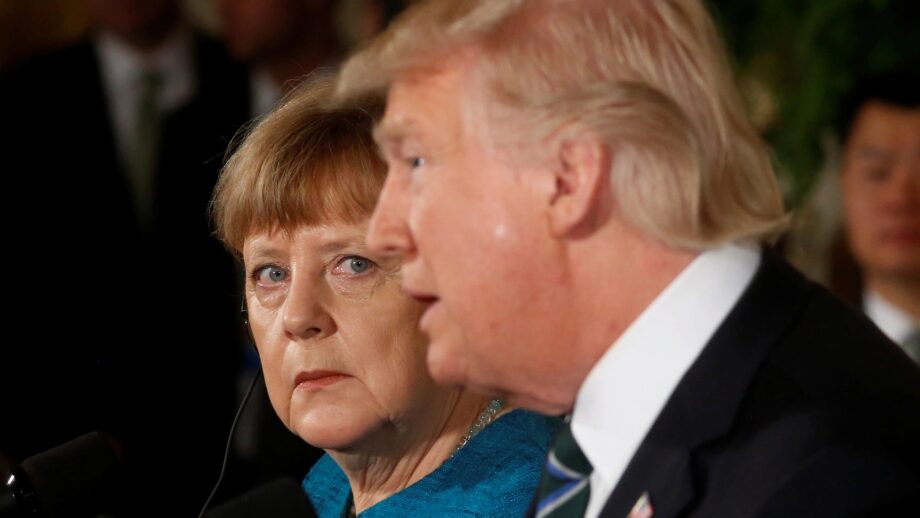
Angela Merkel listens as President Donald Trump speaks during their joint news conference in the East Room of the White House in Washington, on Friday, March 17, 2017. Photos: Evan Vucci/AP; Jonathan Ernst/Reuters
These visual cues frequently occur in combination, with people’s expressions rapidly shifting as they process what they are hearing. Take a moment to study these different frames of Trump and his task force during the Covid crisis.

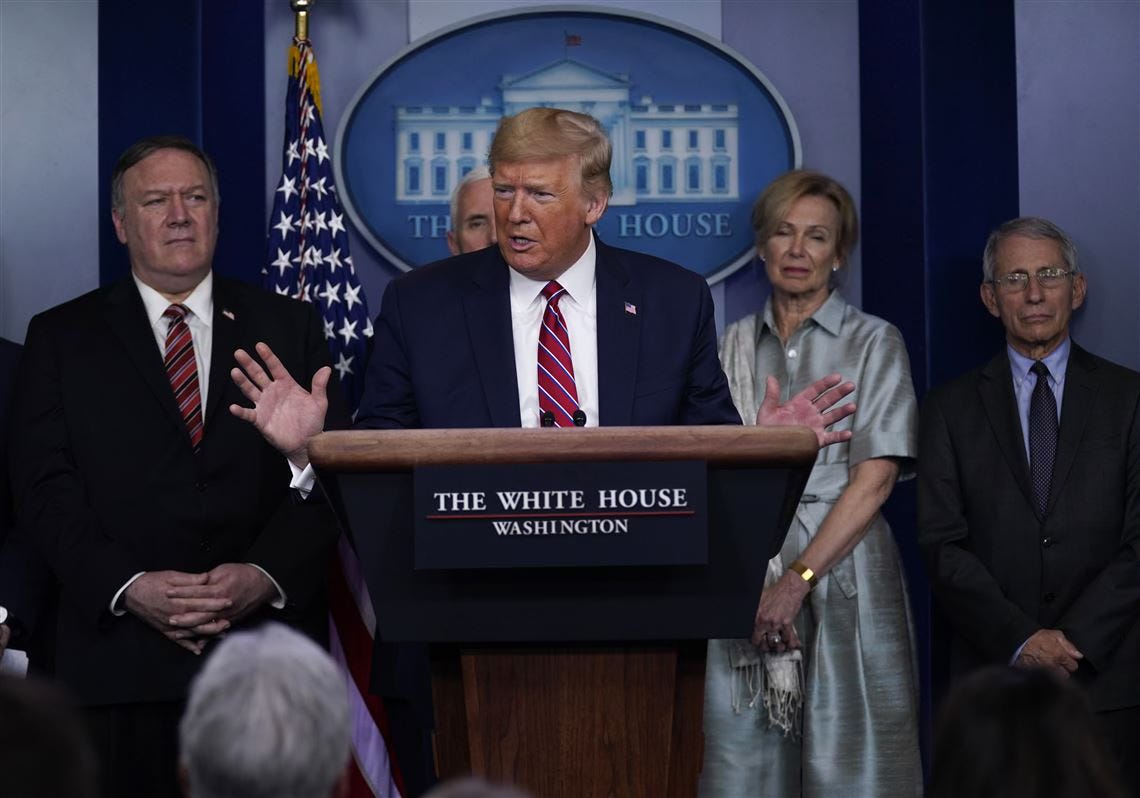
President Donald Trump speaks during a coronavirus task force briefing at the White House, Friday, March 20, 2020, in Washington. Photo: AP.
Skepticism and disbelief are also prevalent, with raised eyebrows, widened eyes, and slight head shakes indicating doubt about the veracity of logic or claims. These expressions often convey a silent communication of perplexity or incredulity among those witnessing. Concern and dismay are evident through subtle grimaces or downturned mouths. People reflect their discomfort and unease through averted gazes or fidgeting, and display facial expressions such as tight lips, clenched jaws, or closed eyes.
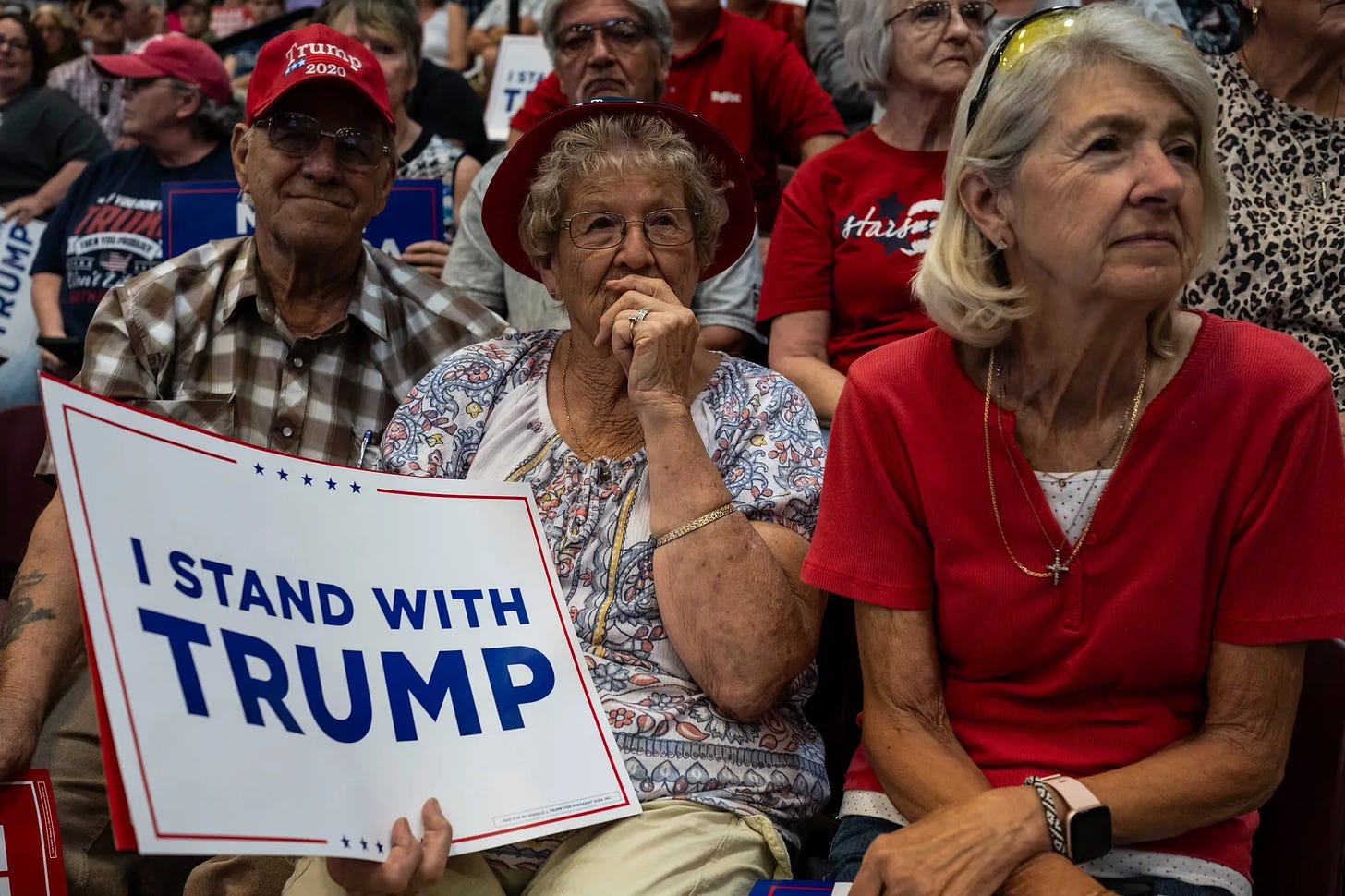
From: “How Trump’s Verbal Slips Could Weaken His Attacks on Biden’s Age.” The New York Times. Oct. 30, 2023. Caption: Mr. Trump’s speaking style has often meant that his supporters, or voters open to backing him, hear what they want from him. Photo: Jordan Gale for The New York Times
These reactions are not exclusive to Trump critics or those impartial to him. It’s not that people don’t register his senselessness. It’s that his followers choose to excuse it.
Among Recent Examples
You might be wondering whether these visual reactions to Trump are limited given his tendency to handpick the most “mirroring” audiences. While the campaign trail does expose him to more impartial moderators and the general public, the key is that even in controlled settings—as you see in the tortured photos of Trump and his Covid team in the White House Briefing Room—his behavior is evident. Photographers, photo editors, and news consumers can capture and recognize these unguarded reactions just by being more attuned.
That is the case in these photos taken a week and a half ago by the New York Times’s Doug Mills during Trump’s visit to the Hurricane Helene Command Center in Georgia. Many factors can qualify the interaction between Trump and the team. People are tired, stressed, or just don’t have the bandwidth to stop and talk.
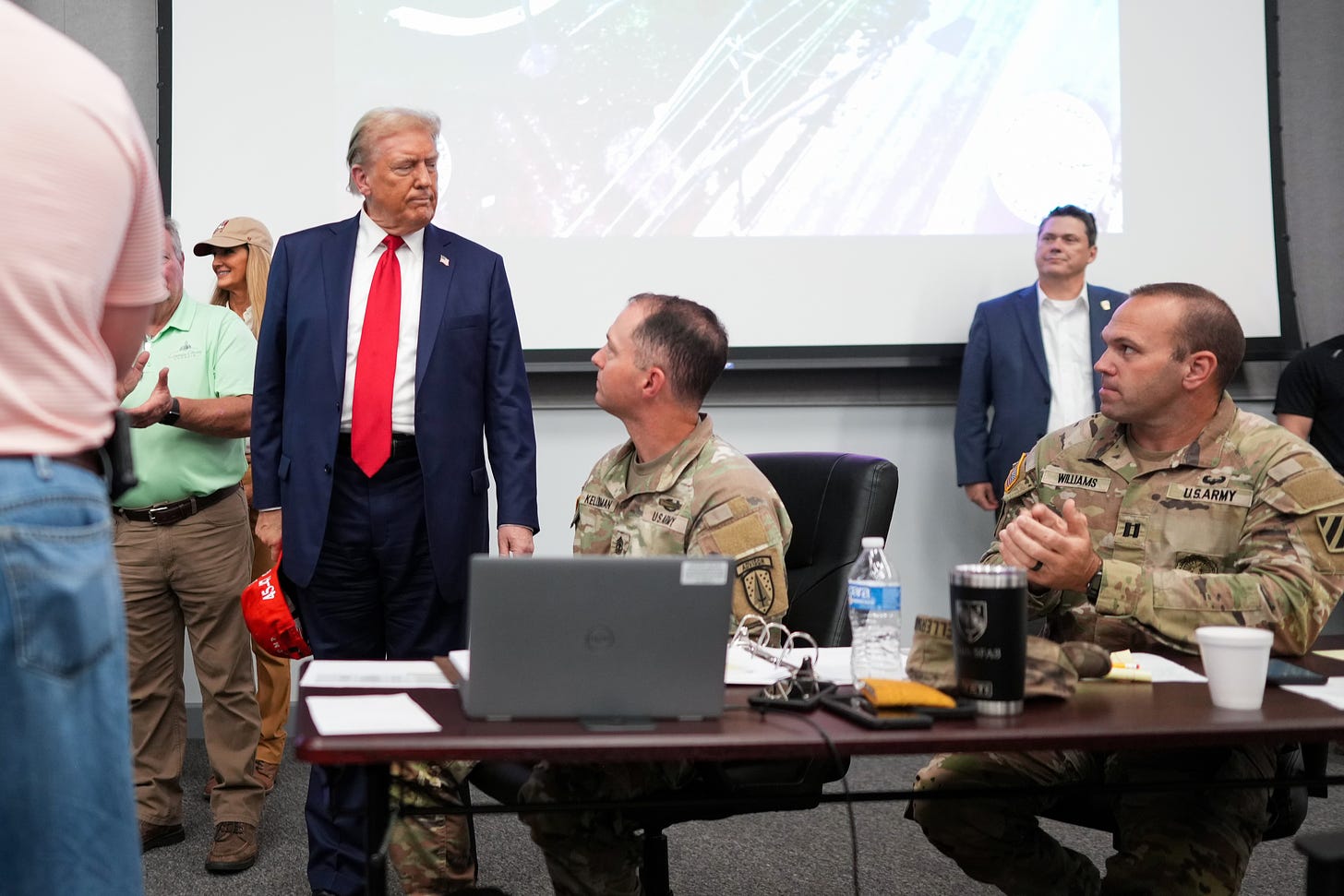
Republican presidential nominee, former U.S. President Donald Trump, is briefed by local officials about the damage from Hurricane Helene on September 30, 2024, in Valdosta, Georgia. Trump met with local officials, first responders, and residents who have been impacted by last week’s hurricane, which has left at least 90 people dead across Florida, Georgia, North Carolina, South Carolina, and Virginia. Photo: Doug Mills/Pool/Getty Images
Still, as Tim Walz called out, Trump is weird, which makes the exchange of gazes between Trump and the two men in uniform weird. Especially when you consider the standard for this kind of photo-op.
Perhaps these crisis response professionals are ultimately aware of Kamala Harris’s comment that “Donald Trump prefers to run on problems instead of fixing them.: They may have also observed Trump’s appearance in Georgia during this massive disaster, where he blatantly lied about the government’s relief effort and engaged in politicking as usual.
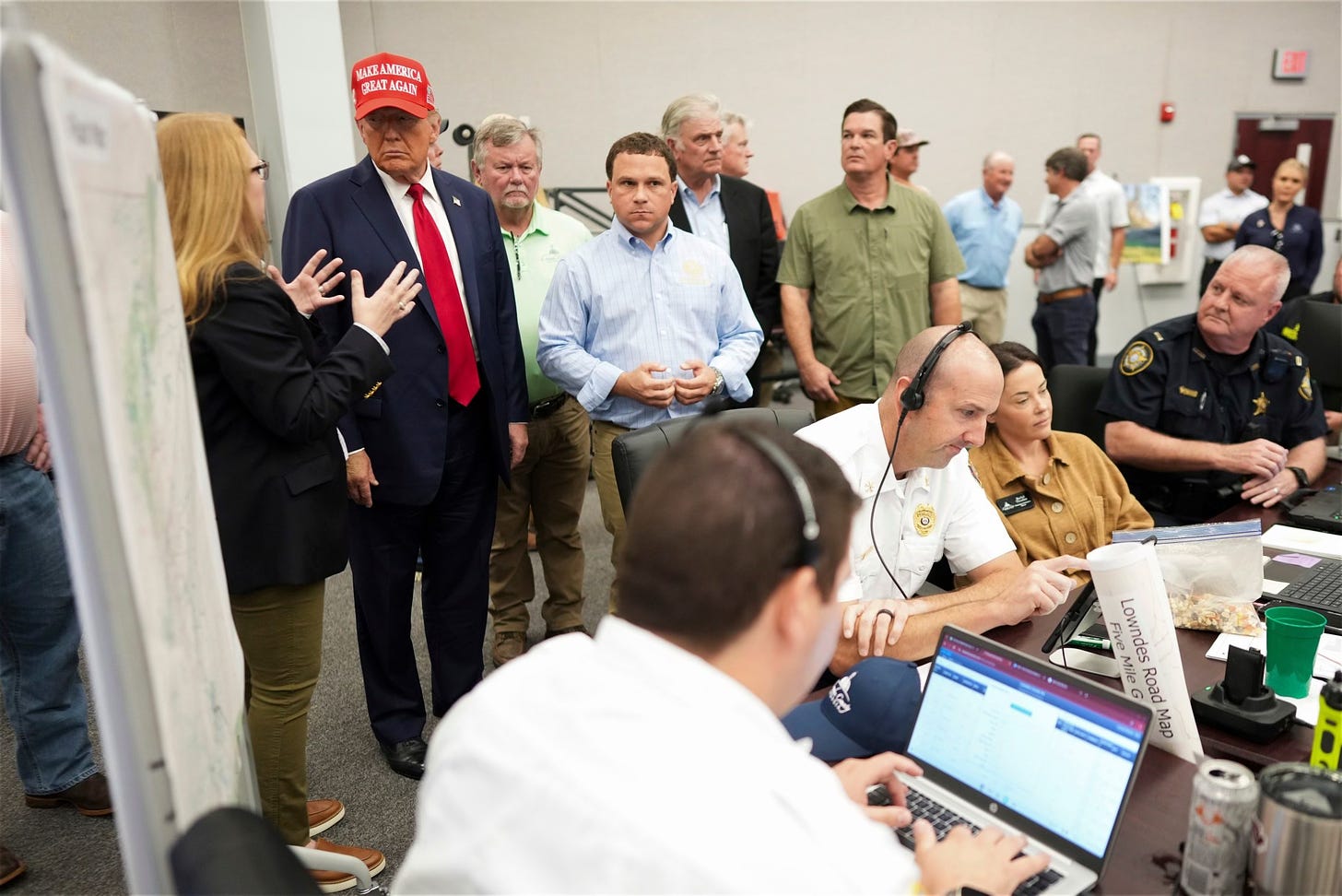
Doug Mills/Pool/Via Getty Images
Besides the inattention and agitation of the men off Trump’s shoulder—the former president’s eyes now in shadow from his re-doffed campaign hat, notice the icy expression of the officer in the black uniform as he gazes freely.
Breaking Through
To pierce the veil of normalization surrounding Trump’s behavior, we must focus on the human impact. By capturing the reactions of those around him, photographers and photo editors can expose the alienation and dysfunction he inspires. This shift in perspective reveals the true cost of his rhetoric, empowering us to confront the complexities of his mesmerization and its far-reaching consequences. Only then can we break free from the sanitized narrative and confront the reality of Trump’s influence.

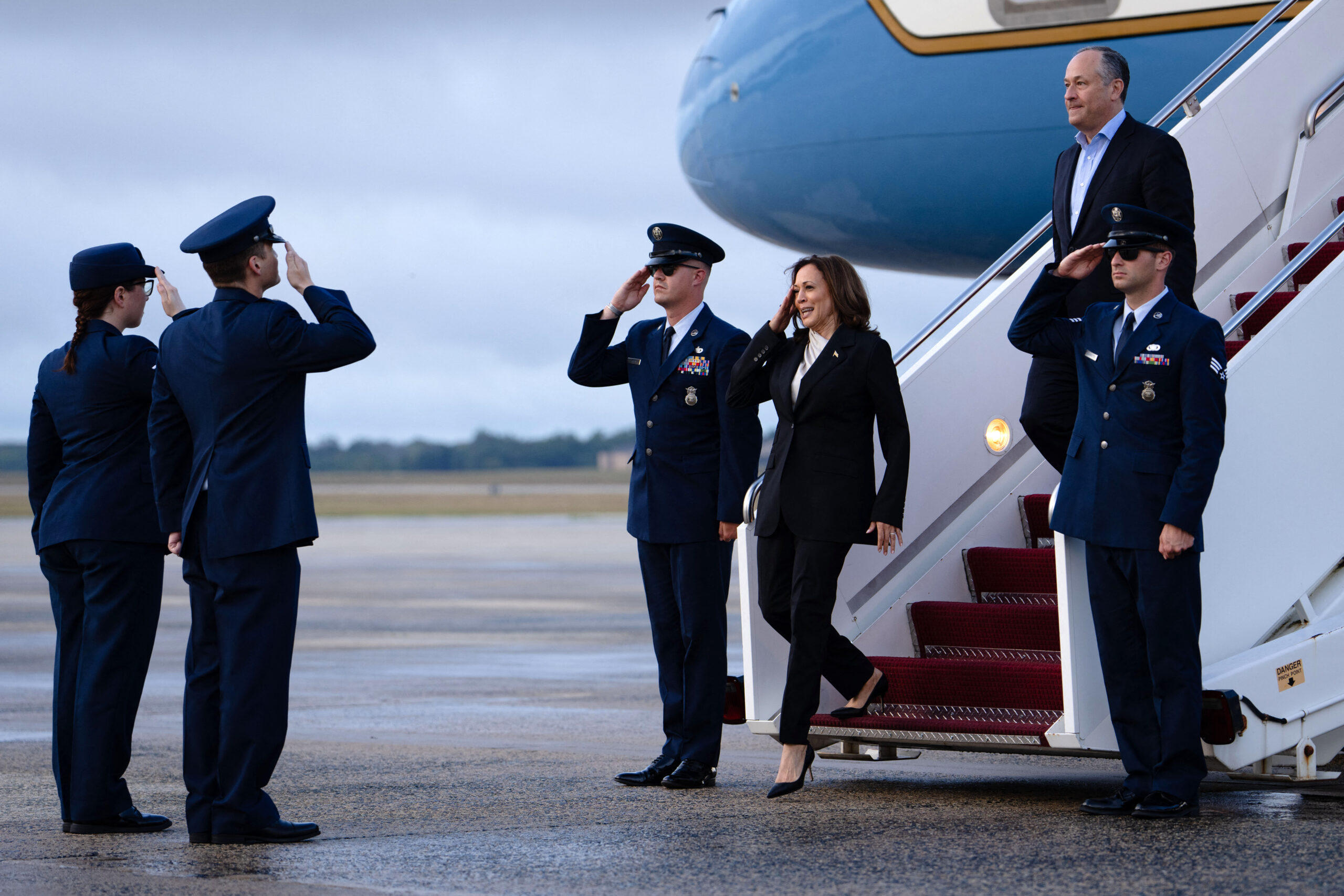
Reactions
Comments Powered by Disqus